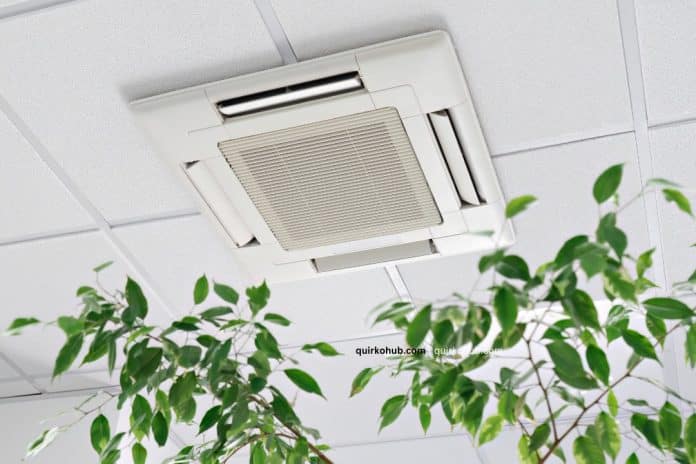Indoor air quality has become an increasingly important topic as more people spend the majority of their time inside homes, offices, and other enclosed spaces. The air within these environments can carry a range of pollutants, including dust, allergens, mold spores, pet dander, and even harmful gases, which can negatively affect health and comfort. Poor air quality can lead to headaches, fatigue, respiratory problems, allergies, and other health issues.
Heating and cooling service providers play a vital role in managing and improving indoor air quality by ensuring HVAC systems operate effectively and by implementing solutions that reduce indoor pollutants. We will explore the various ways these providers contribute to cleaner, healthier air indoors, emphasizing the importance of their work beyond simply maintaining temperature control.
How Heating and Cooling Services Enhance Indoor Air Quality
1. Routine Maintenance and Air Filter Management
A key factor in improving indoor air quality is the regular maintenance of heating and cooling systems by a heating and cooling service provider, particularly in managing air filters. Air filters serve as the first line of defense against airborne contaminants by trapping dust, pollen, pet dander, and other particles. However, these filters need consistent monitoring and replacement to maintain their effectiveness. When filters become clogged with dirt and debris, airflow decreases, and trapped particles can bypass the filter, circulating freely throughout the indoor environment.
Heating and cooling service providers conduct regular inspections and replace or clean filters as necessary. This simple yet essential maintenance step helps to significantly reduce indoor pollutants, ensuring the air circulating within a building remains cleaner. Furthermore, a clean filter reduces strain on HVAC components, promoting system longevity and energy efficiency, which indirectly supports healthier indoor conditions by maintaining balanced air circulation.
2. Thorough Duct Cleaning and Inspection
Ductwork is often an overlooked component that can significantly impact indoor air quality. Over time, ducts accumulate dust, mold spores, pet dander, and other debris that can be blown back into living spaces every time the system runs. Heating and cooling service providers offer duct cleaning services that remove this buildup, which is especially important in older homes or buildings where ducts have never been cleaned. In addition to cleaning, they perform detailed inspections to detect leaks, gaps, or damage in the ductwork. Faulty ducts may allow unconditioned air from basements, attics, or crawl spaces to enter the system, introducing unwanted pollutants and moisture that degrade air quality.
Proper sealing and cleaning of ducts not only prevent these issues but also improve HVAC system performance by enhancing airflow. This combination of cleaning and repair reduces the recirculation of contaminants, helping to maintain a healthier indoor environment.
3. Installation of Enhanced Air Purification Systems
Beyond basic maintenance, many heating and cooling providers offer advanced air purification solutions to further improve indoor air quality. These systems go beyond standard filters to capture and neutralize microscopic particles, bacteria, viruses, and volatile organic compounds (VOCs). Common options include ultraviolet (UV) light purifiers that destroy microbes, electronic air cleaners that trap fine particles through electrostatic charge, and high-efficiency particulate air (HEPA) filters, which are capable of capturing particles as small as 0.3 microns.
Providers assess the specific needs of a home or building and recommend purification technologies that integrate seamlessly with existing HVAC systems. The installation of these systems can be particularly beneficial for individuals with respiratory sensitivities or immune challenges, as it substantially reduces harmful contaminants. Properly installed air purification solutions enhance overall air quality and safety without compromising energy efficiency or comfort levels.
4. Balancing Indoor Humidity Levels
Humidity control is a crucial yet often overlooked aspect of indoor air quality. Too much moisture in the air encourages the growth of mold, mildew, dust mites, and bacteria, all of which worsen air quality and can trigger allergies or respiratory issues. Conversely, air that is too dry can lead to irritation of the skin, eyes, and respiratory tract. Heating and cooling service providers manage humidity by integrating humidifiers or dehumidifiers within HVAC systems or adjusting ventilation and cooling functions to maintain optimal moisture levels.
These adjustments prevent excess condensation and reduce the likelihood of mold growth inside walls, ducts, or on surfaces. Maintaining a balanced humidity level also protects the building structure from moisture damage while creating a more comfortable and healthier living space. By regulating humidity, service providers address a significant contributor to indoor air quality issues that many occupants may not be aware of.
5. Improving Ventilation and Air Exchange
Proper ventilation is fundamental to maintaining good indoor air quality. Many older or inefficient heating and cooling systems simply recirculate indoor air without introducing fresh outdoor air, allowing pollutants to accumulate. Heating and cooling service providers evaluate ventilation needs and often recommend the installation or upgrade of ventilation components such as energy recovery ventilators (ERVs) or heat recovery ventilators (HRVs). These devices bring in fresh outdoor air while expelling stale indoor air, all while recovering energy to reduce heating or cooling costs.
Increased ventilation reduces the concentration of indoor pollutants and replenishes oxygen levels, contributing to a fresher and healthier environment. Providers also ensure that ventilation systems are properly sized and installed to meet the specific requirements of the building and its occupants. Enhanced airflow and air exchange help prevent stuffiness and reduce airborne contaminants, making spaces more breathable and pleasant to inhabit.
Heating and cooling service providers play a multi-faceted role in improving indoor air quality. Their contributions extend well beyond temperature regulation to include filter maintenance, duct cleaning, advanced purification installation, humidity control, ventilation enhancement, system efficiency, and customer education.
These actions work together to reduce indoor pollutants, control moisture, and maintain fresh airflow, creating healthier and more comfortable spaces. As awareness of indoor air quality grows, the importance of skilled service providers in safeguarding the air we breathe becomes ever clearer. Cleaner air indoors supports well-being, productivity, and overall quality of life, making the role of heating and cooling professionals essential in modern living.
